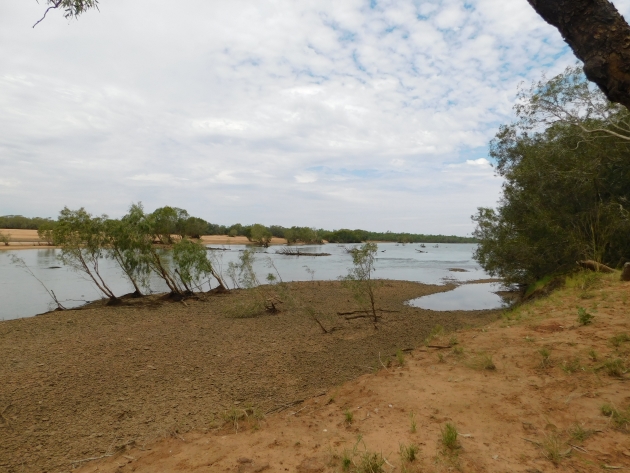
Our closest river to Broome is the Fitzroy River and we can only access it for part of the year. It is approximately 140 kilometres from Broome with the last section being a gravel road. Once we have our wet season rains the gravel road becomes inaccessible and the river floods. Camping beside the Fitzroy River at Langi Crossing is popular once the weather cools off and the gravel road is accessible. There is plenty of space for everyone whether you are travelling light with just a vehicle and tent or with a four-wheel drive camper trailer or caravan. It is a very popular place to go fishing, but for us it is a great place to go bird-watching and we can watch the birds catch the fish!
We had not been to Langi Crossing since our trip at the end of October last year and it did rain whilst we were there. It was a short sharp storm and it soon cleared and cooled the evening down. We always like to go camping for Grant’s birthday and this year it fell on a Sunday, so with the change in the weather we returned to Langi Crossing last weekend. We also camped there last year for his birthday and the water level in the river had been much higher. By my birthday last year, two weeks later, the water level had dropped further, but not as low as it is now. The level of the river varies tremendously throughout the year and it is also tidal. When there are very big tides the sea water pushes up the river mixing salt water with fresh water. The header photo shows the river level last Saturday. It started off hot and cloudy, but soon the clouds cleared and we could enjoy a clear afternoon and night sleeping under the stars.
We were still able to camp in our usual spot by the river, which is high enough to protect ourselves from the resident crocodiles. A previous spot that we have camped at has been eroded away in the last wet season with the tremendous amount of water that has rushed down the river through to the coast. The evidence of the floods is all around.
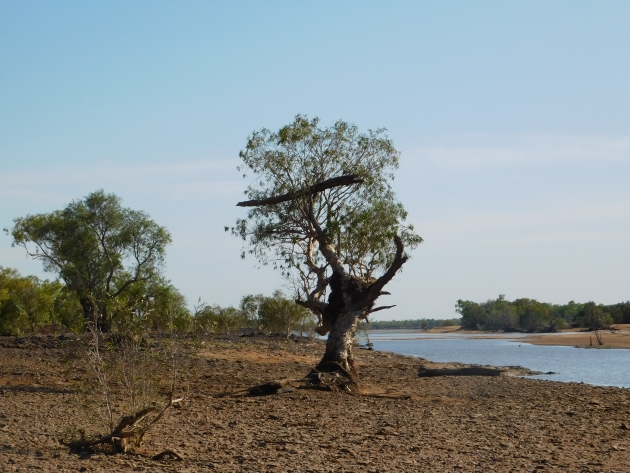
Debris left in the trees after the flood
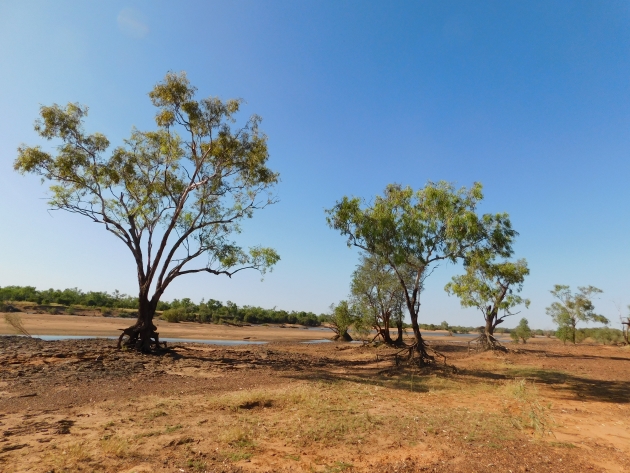
Roots exposed after the floods
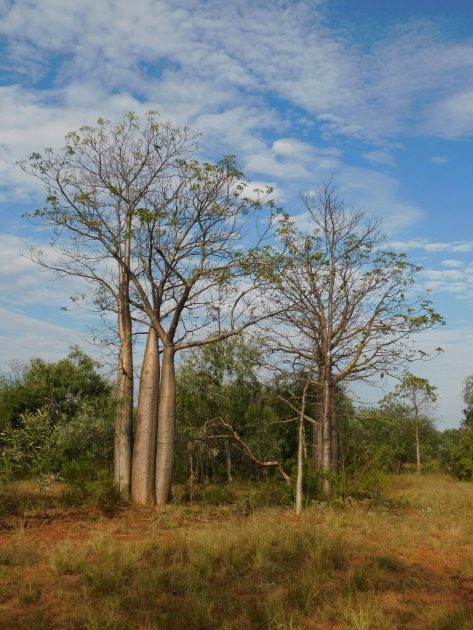
Boabs with leaves after the wet season
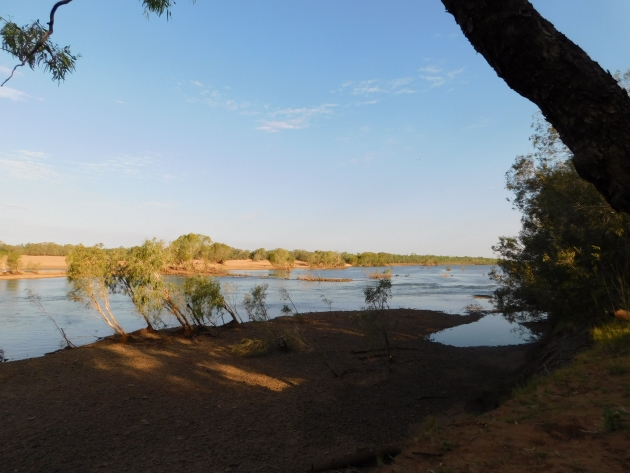
When the sun came out late in the afternoon
Every visit we make to Langi Crossing we observe different birds. When there are native plants in flower there are different birds along the riverbank. It doesn’t matter whether you sit quietly in the shade for a few hours or go for a bushwalk, because there is always something to see or hear.
Around the spot that we choose to camp we had plenty of birds to keep us occupied until we went for a bushwalk. There were birds wandering around our camp, nipping about in the trees and bushes and birds beside the river. We soon had a decent list in our notebook and there were a few bird species that we had not yet seen this year.
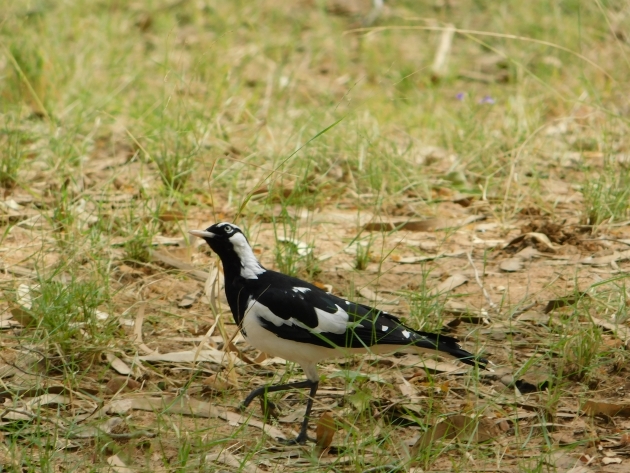
Magpie-lark in our camp
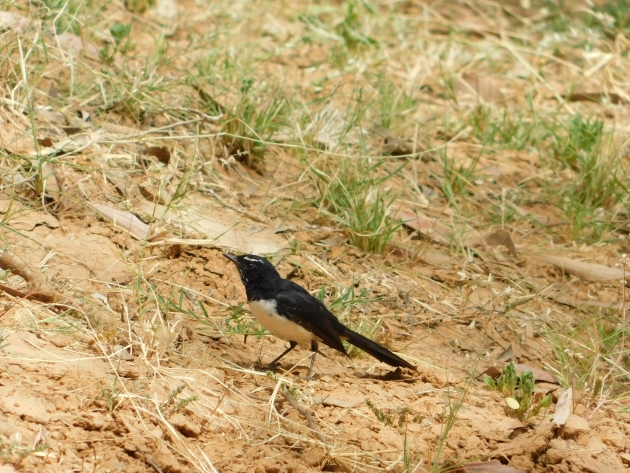
Willie Wagtail in our camp
As always there was a good selection of birds beside the river. They mostly dropped in for a drink and didn’t stay long. The crocodiles were mostly submerged during the heat of the day, but the birds are ever cautious of the environment that they are in.
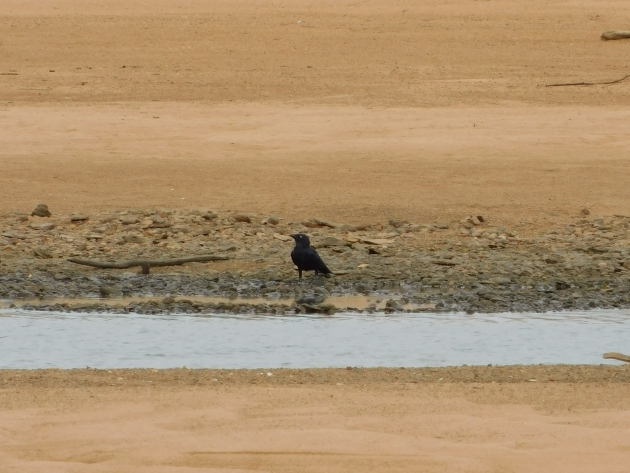
Torresian Crow beside the river
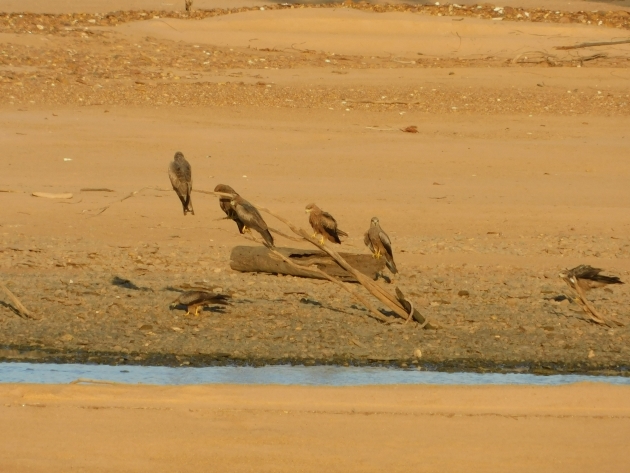
Black Kites beside the river
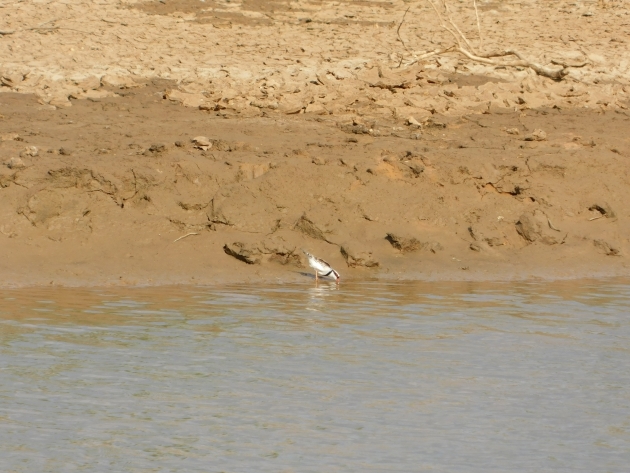
Black-fronted Dotterel beside the river
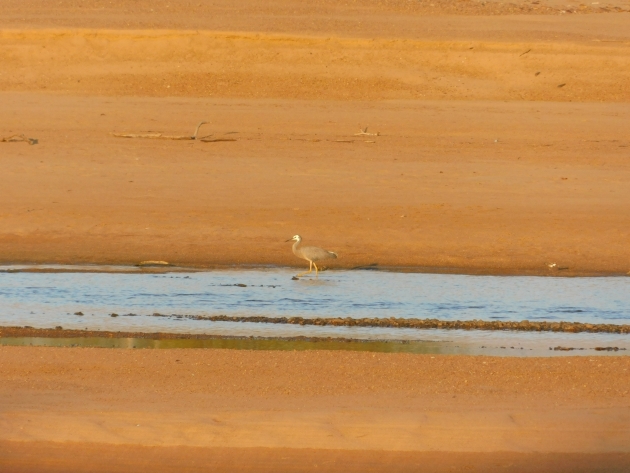
White-faced Heron beside the river
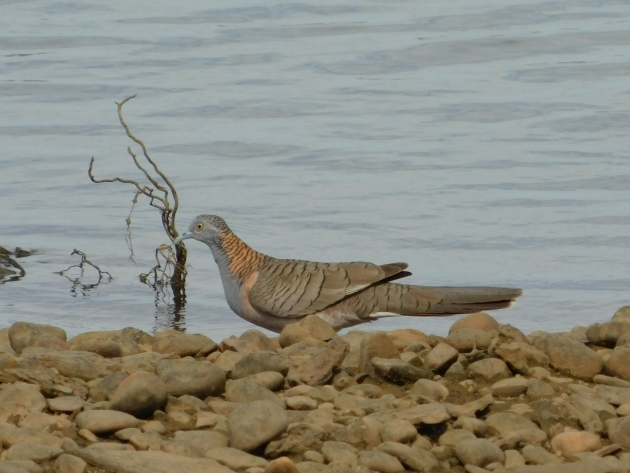
Bar-shouldered Dove beside the river
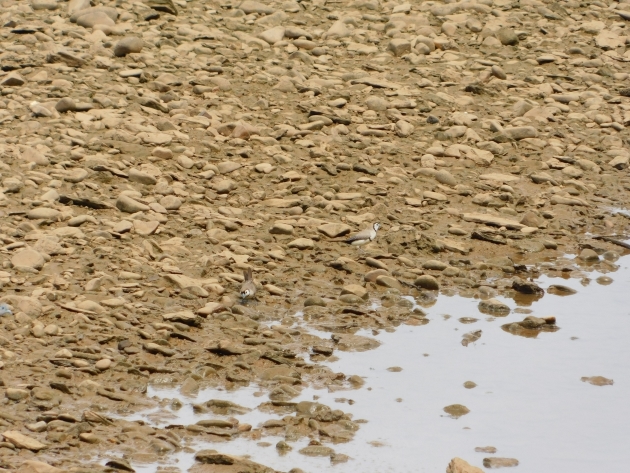
Two Double-barred Finch camouflaged by the river!
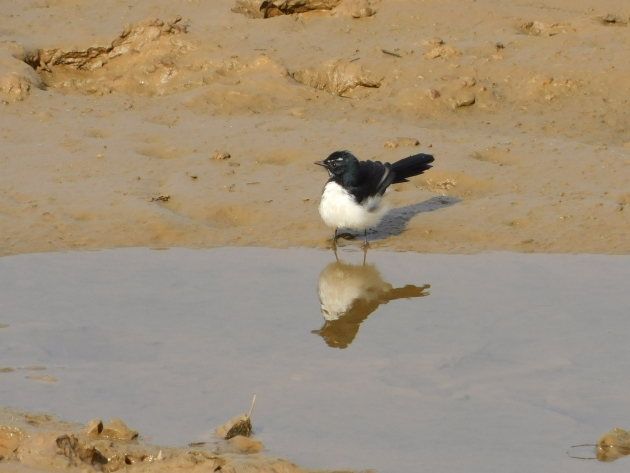
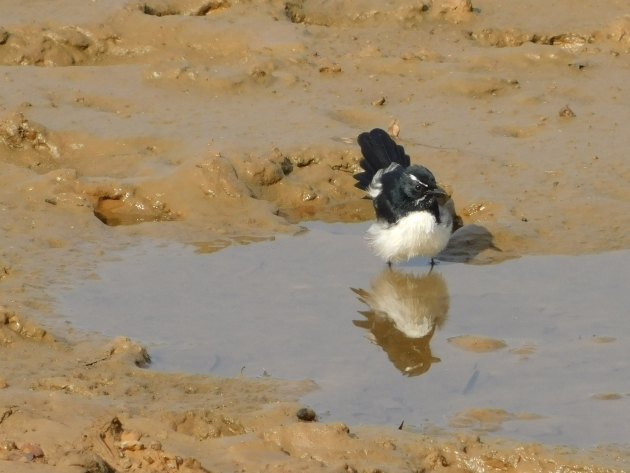
Willie Wagtail in the river!
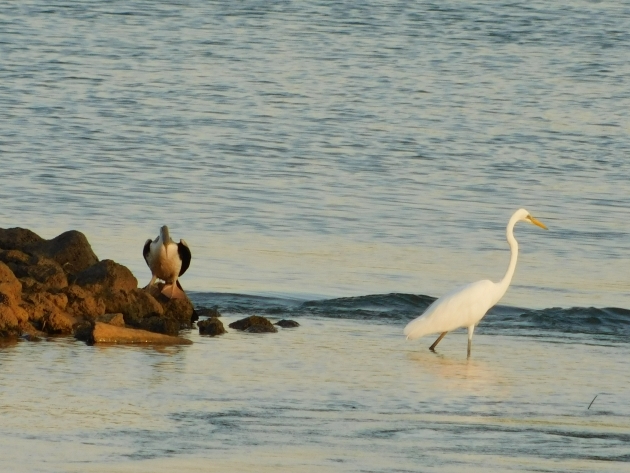
Great Egret and Australian Darter fishing in the river
There was also a good selection of birds in the trees along the edge of the river and above our camp. The light was not particularly good when we first arrived, but it didn’t stop the birds from dropping by and getting added to our list. Diamond Doves, Little Friarbirds, Yellow-tinted Honeyeaters, Singing Honeyeaters, Brown Honeyeaters, Rufous-throated Honeyeaters, Black-chinned Honeyeater, White-gaped Honeyeaters, Black-faced Cuckoo-shrikes, White-bellied Cuckoo-shrikes, a pair of Sacred Kingfishers, Rufous Whistler, Grey-shrike Thrush, Pied Butcherbirds, White-winged Trillers, Mistletoebird, Zebra Finch, Weebills, Red-backed Fairywrens, Purple-backed Fairywrens and Red-browed Pardalotes all made themselves known.
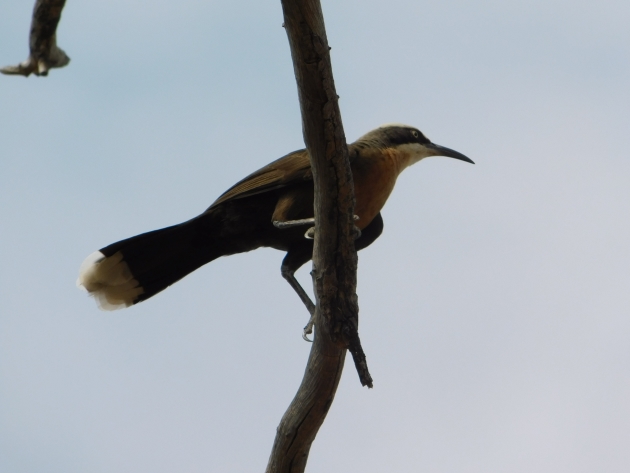
Grey-crowned Babbler in a tree
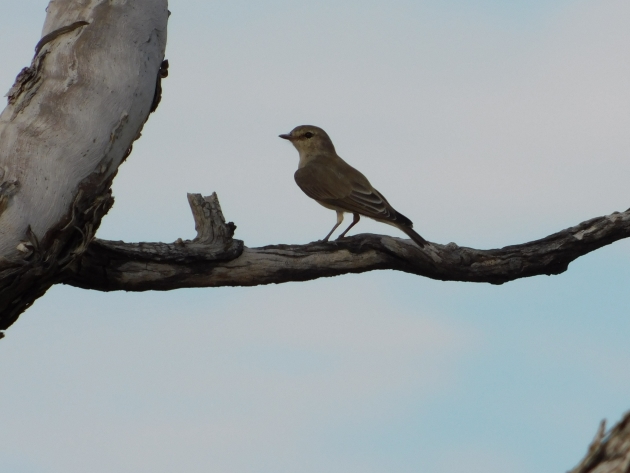
Jacky Winter
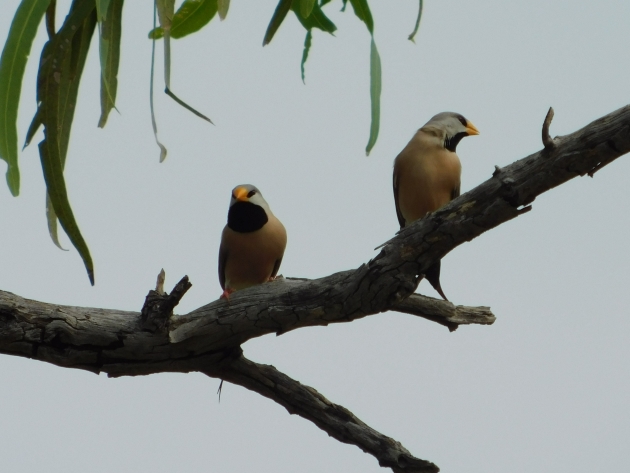
Long-tailed Finch
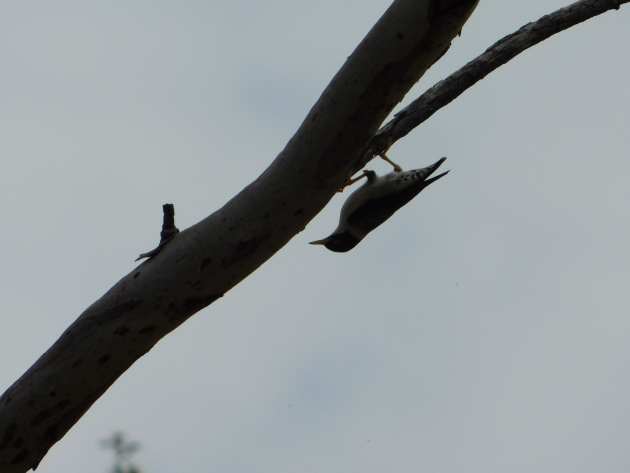
Varied Sittella
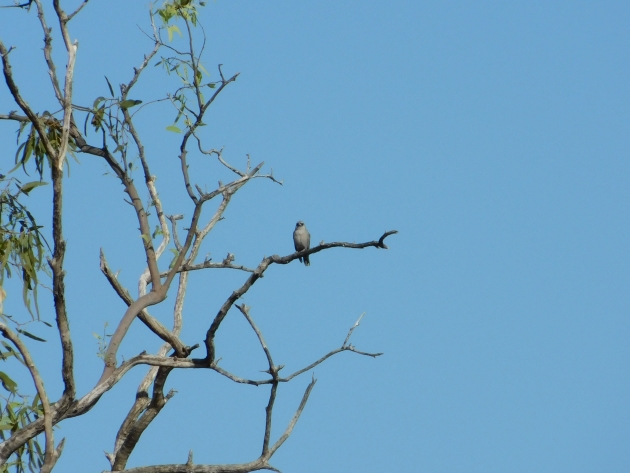
Black-faced Woodswallow
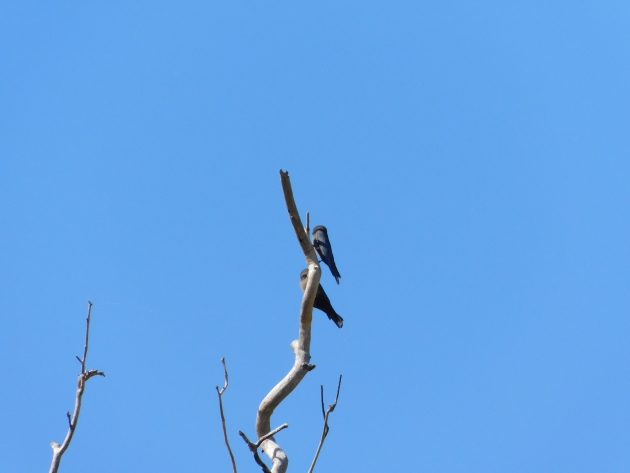
Little Woodswallows
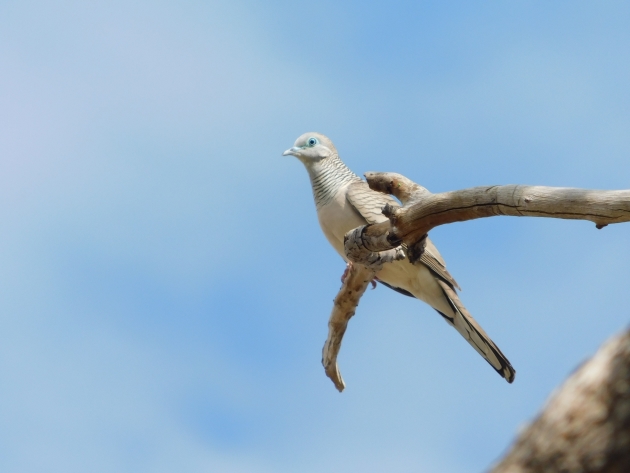
Peaceful Dove
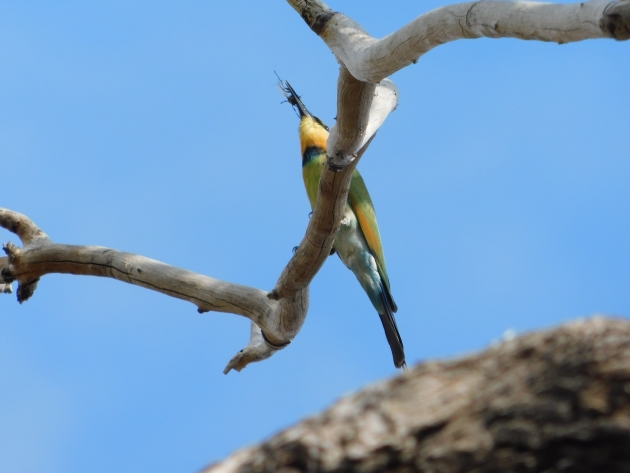
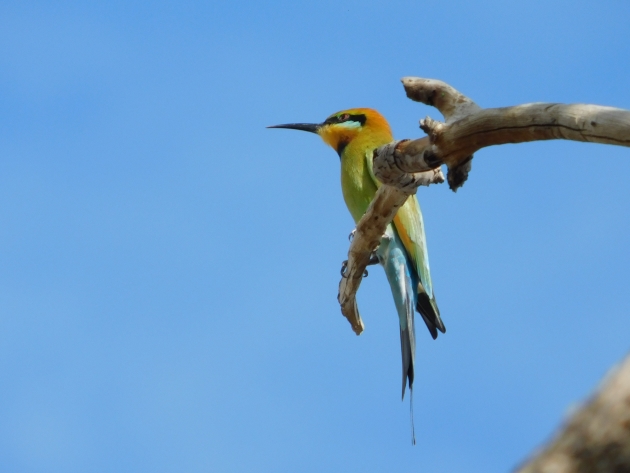
Rainbow Bee-eater
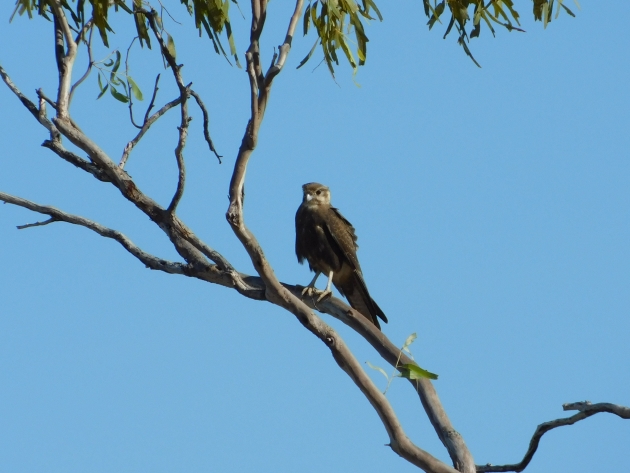
Brown Falcon
One of the most efficient fishing birds on the river is the White-bellied Sea-Eagle. We usually encounter a pair of them when we visit the river. There are usually Gull-billed Terns, Whiskered Terns and Caspian Terns fishing as well and it was no different on this visit.
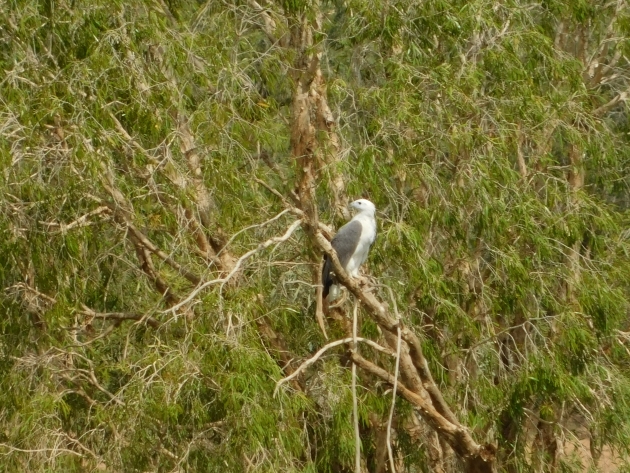
White-bellied Sea-Eagle
A huge selection of birds were observed flying across the river and both up and down the river. They included White-breasted Woodswallows, Whistling Kites, Great Bowerbirds, Brown Goshawk, Crested Pigeon, Tree Martins, Dollarbirds, a lone Channel-billed Cuckoo, Little Pied Cormorant, a pair of Australian Bustards, Brolga, Red-winged Parrots, Red-collared Lorikeets, Cockatiels, Sulphur-crested Cockatoos and Galahs. Thankfully we were not disturbed too much during the night by the wailing Bush Stone-curlews or the Australian Owlet-nightjar.
Late in the day there was a decent size crocodile that literally surfed its way through the open barrage and floated downstream. No effort whatsoever!
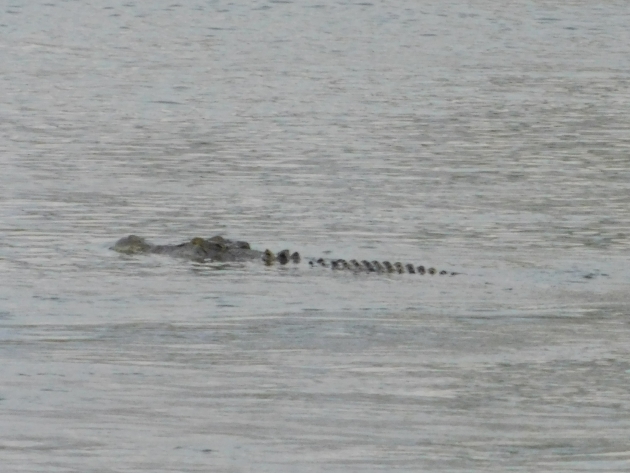
Crocodile
On our last visit in October last year we had 70 bird species for our visit. We were more than happy to have 66 bird species for this visit.











Great photos, Clare! Makes me wish even more for the lockdown here in Shanghai to be over soon.
Thanks, Kai.
Keep on making plans for “after lockdown”.